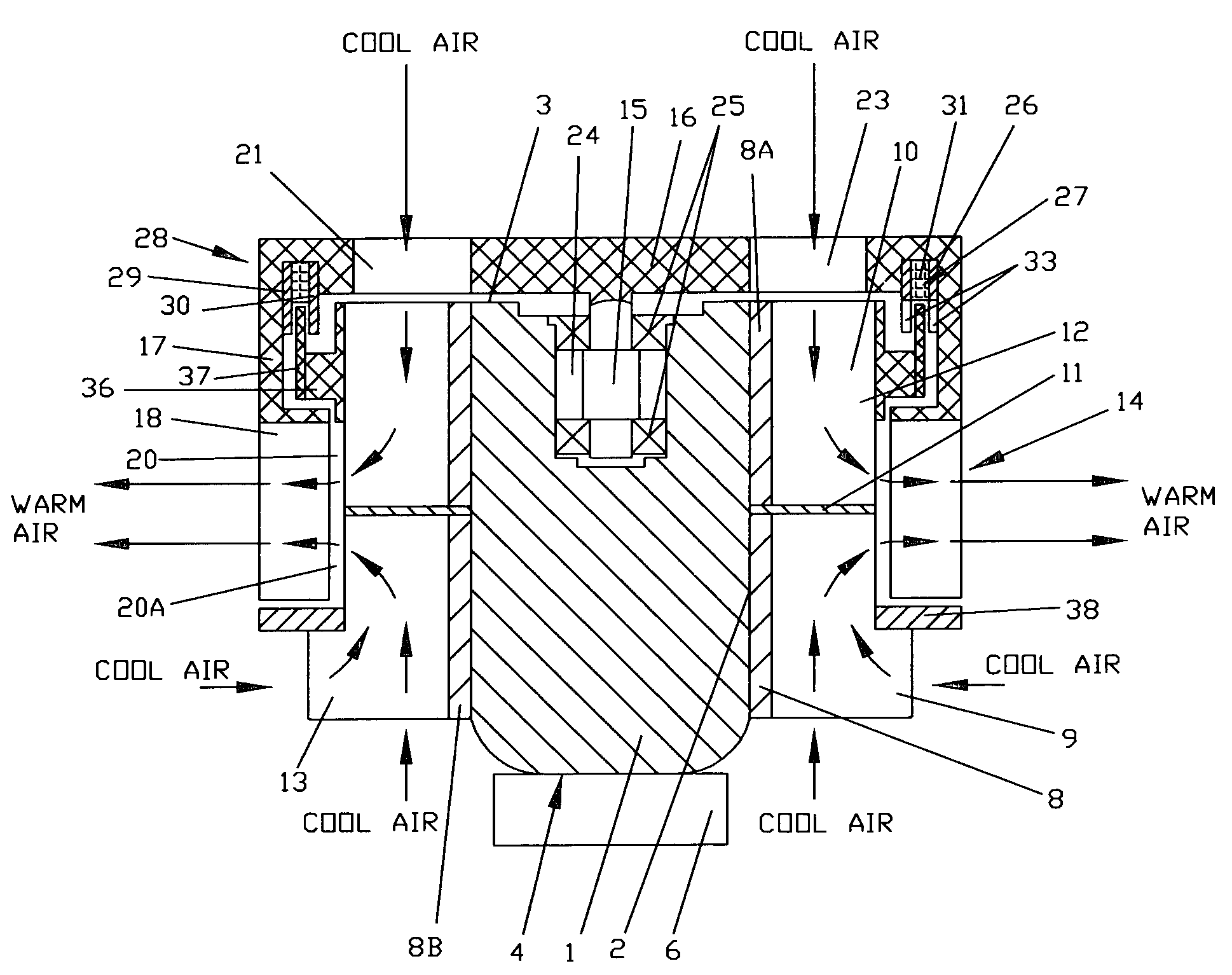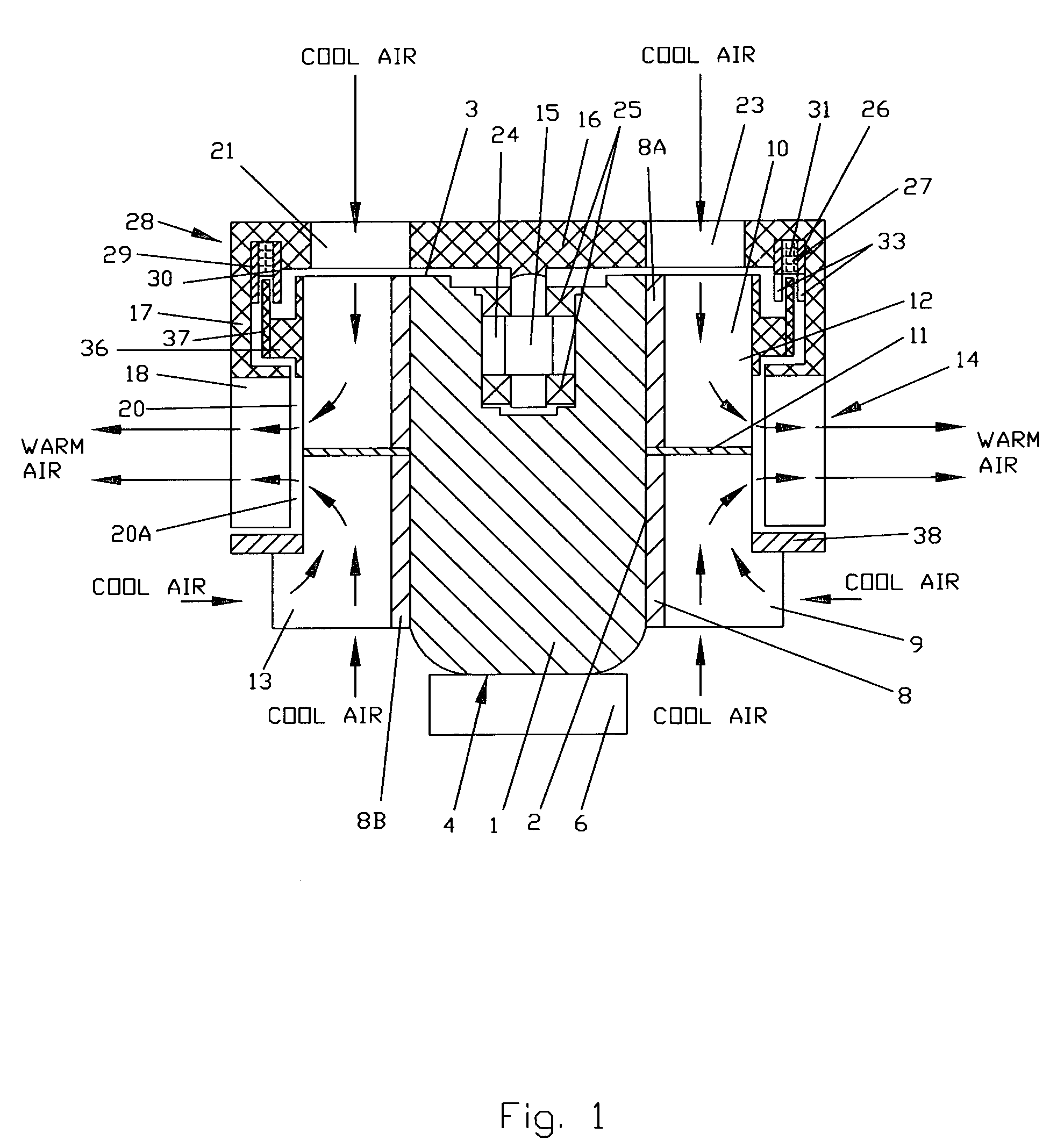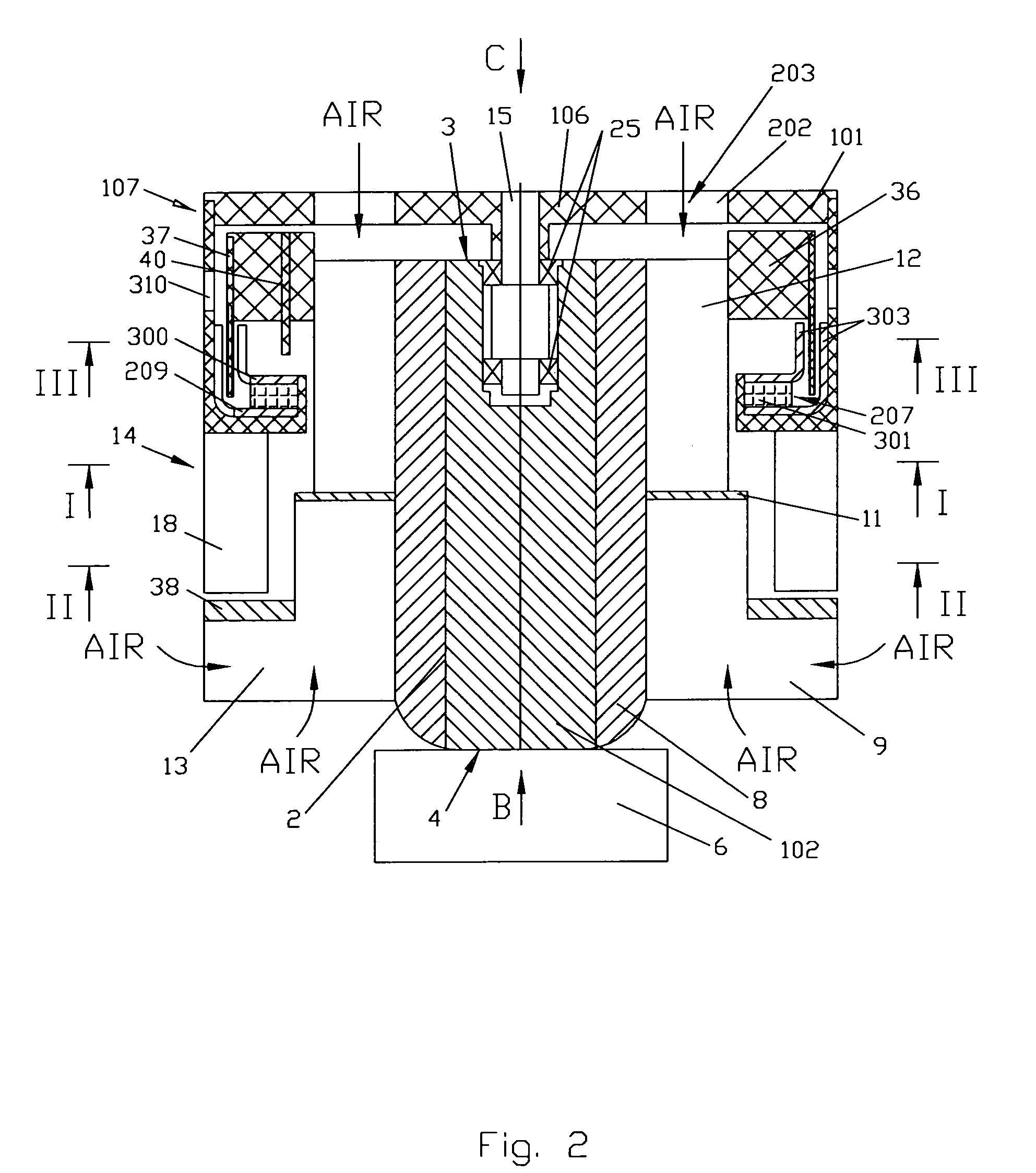Cooler for electronic devices
a technology of electronic devices and cooling devices, which is applied in the direction of air heaters, semiconductor/solid-state device details, lighting and heating apparatus, etc., can solve the problems of unfavorable cooling conditions for the central part of the heat sink located underneath the fan, damage and/or a reduction in operating performance, and many electronic components generate significant amounts of heat. , to achieve the effect of reducing the length of the air path through the heat sink channel, increasing the cooling ability of the heat sink, and reducing the temperature differential
- Summary
- Abstract
- Description
- Claims
- Application Information
AI Technical Summary
Benefits of technology
Problems solved by technology
Method used
Image
Examples
first embodiment
[0036]the present invention is shown in FIG. 1. The cooler includes the central core 1; said central core 1 has a cylindrical shape 2 with a flat top surface 3 and a flat bottom surface 4. The flat bottom surface 4 is for making direct mechanical contact with electronic component heat dissipation footprint 6. Said flat bottom part surface 4 and said electronic component heat dissipation footprint 6 have about the same shape of contact surfaces. Shape the bottom surface usually is the same as the electronic component heat dissipation footprint one.
[0037]The central core 1 is constructed from a good thermal conductive metal and placed inside of a cylindrical bushing 8 that has radial heat exchanging fins 9 protruding out in a radial fashion. Said radial heat exchanging fins 9 protruding out of said central core 1 in radial direction so that surface of said fins 9 is parallel to central axis. The fins 9 may be made spiral-like and bent in the direction of centrifugal type impeller rota...
second embodiment
[0043]Around an upper part of the fins 9 is located cylindrical bushing 36 that secures the stator 37 to the rest of the unit. The stator's coils are fabricated on standard printed circuit board material (will be described in the second embodiment). The unsecured part of the stator 37 is located in a gap formed between the teeth 33 of cylinders 29 and 30. A flat ring 38 is secured on the outside surface of the bottom part of the fins 9. The Hall device 39 that may be a Hall sensing element or Hall switch (FIG. 7) is used to control commutation of the motor 28. An optical device may also be used to control commutation of the motor 28 but has limitations because of interference from ambient light sources. The Hall device 39 is located in close proximity to the rotor 303 (FIG. 7) and positioned to achieve proper rotational direction and optimum performance from the motor 28.
[0044]The above describe apparatus functions as follows: When current is commutated through the stator coils the ...
PUM
 Login to View More
Login to View More Abstract
Description
Claims
Application Information
 Login to View More
Login to View More - R&D
- Intellectual Property
- Life Sciences
- Materials
- Tech Scout
- Unparalleled Data Quality
- Higher Quality Content
- 60% Fewer Hallucinations
Browse by: Latest US Patents, China's latest patents, Technical Efficacy Thesaurus, Application Domain, Technology Topic, Popular Technical Reports.
© 2025 PatSnap. All rights reserved.Legal|Privacy policy|Modern Slavery Act Transparency Statement|Sitemap|About US| Contact US: help@patsnap.com



